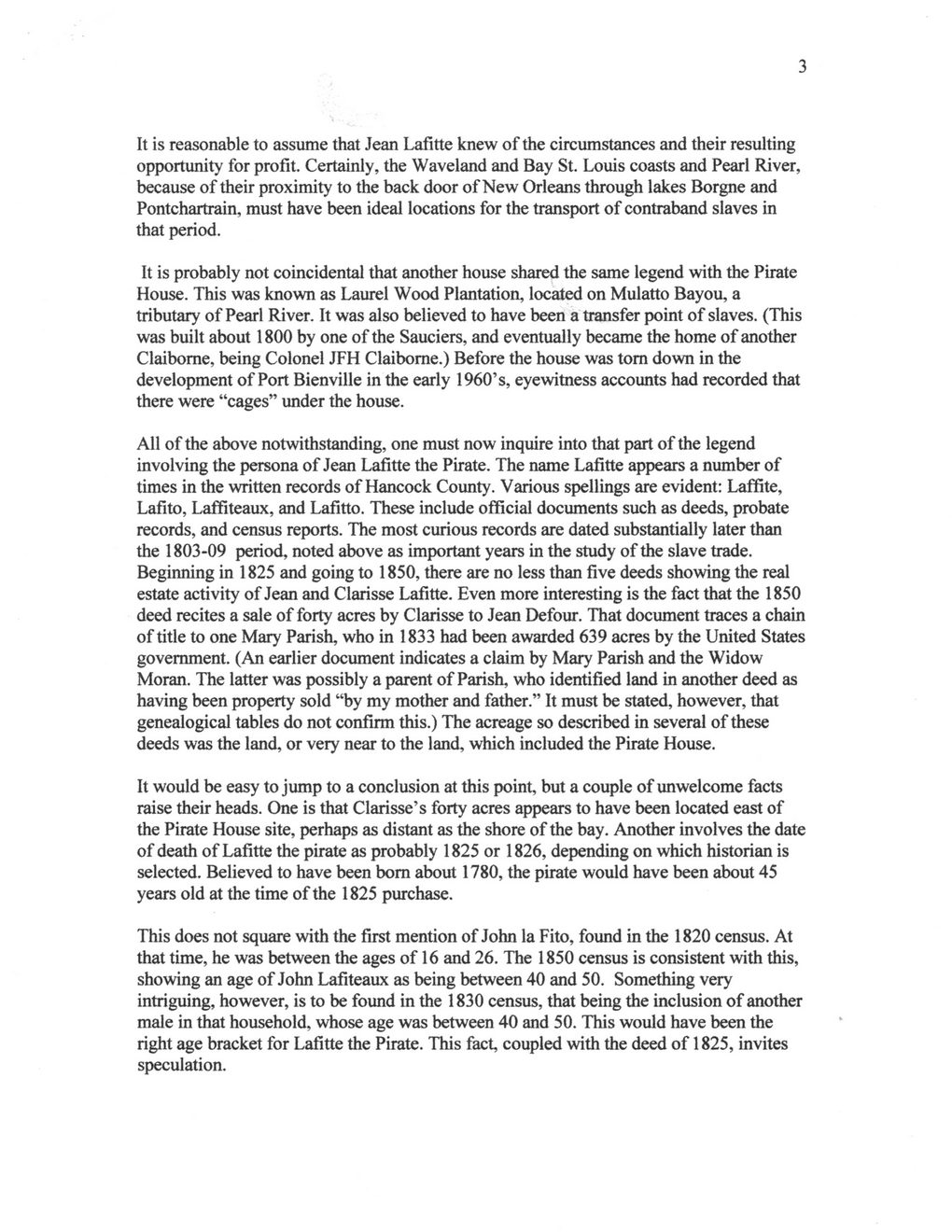This text was obtained via automated optical character recognition.
It has not been edited and may therefore contain several errors.
3 It is reasonable to assume that Jean Lafitte knew of the circumstances and their resulting opportunity for profit. Certainly, the Waveland and Bay St. Louis coasts and Pearl River, because of their proximity to the back door of New Orleans through lakes Borgne and Pontchartrain, must have been ideal locations for the transport of contraband slaves in that period. It is probably not coincidental that another house shared the same legend with the Pirate House. This was known as Laurel Wood Plantation, located on Mulatto Bayou, a tributary of Pearl River. It was also believed to have been a transfer point of slaves. (This was built about 1800 by one of the Sauciers, and eventually became the home of another Claiborne, being Colonel JFH Claiborne.) Before the house was tom down in the development of Port Bienville in the early 1960’s, eyewitness accounts had recorded that there were “cages” under the house. All of the above notwithstanding, one must now inquire into that part of the legend involving the persona of Jean Lafitte the Pirate. The name Lafitte appears a number of times in the written records of Hancock County. Various spellings are evident: Laffite, Lafito, Laffiteaux, and Lafitto. These include official documents such as deeds, probate records, and census reports. The most curious records are dated substantially later than the 1803-09 period, noted above as important years in the study of the slave trade. Beginning in 1825 and going to 1850, there are no less than five deeds showing the real estate activity of Jean and Clarisse Lafitte. Even more interesting is the fact that the 1850 deed recites a sale of forty acres by Clarisse to Jean Defour. That document traces a chain of title to one Mary Parish, who in 1833 had been awarded 639 acres by the United States government. (An earlier document indicates a claim by Mary Parish and the Widow Moran. The latter was possibly a parent of Parish, who identified land in another deed as having been property sold “by my mother and father.” It must be stated, however, that genealogical tables do not confirm this.) The acreage so described in several of these deeds was the land, or very near to the land, which included the Pirate House. It would be easy to jump to a conclusion at this point, but a couple of unwelcome facts raise their heads. One is that Clarisse’s forty acres appears to have been located east of the Pirate House site, perhaps as distant as the shore of the bay. Another involves the date of death of Lafitte the pirate as probably 1825 or 1826, depending on which historian is selected. Believed to have been bom about 1780, the pirate would have been about 45 years old at the time of the 1825 purchase. This does not square with the first mention of John la Fito, found in the 1820 census. At that time, he was between the ages of 16 and 26. The 1850 census is consistent with this, showing an age of John Lafiteaux as being between 40 and 50. Something very intriguing, however, is to be found in the 1830 census, that being the inclusion of another male in that household, whose age was between 40 and 50. This would have been the right age bracket for Lafitte the Pirate. This fact, coupled with the deed of 1825, invites speculation.

Pirate House Document (075)